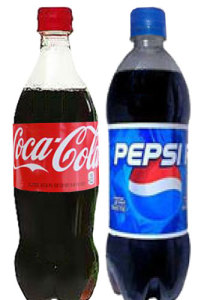We know that water is the main component of beverages. If water is contaminant by some of elements then it may effects on the taste, odors and color of beverages.
Most treated water is chlorinated to destroy pathogenic bacteria and other micro-organisms. If the water contains little amount of free chlorine, even that are not identified by taste in water can react with others chemicals and may alter the taste of finished beverages product.
There is a large amount of chemicals in the Public water supplies; it may cause medicinal, fishy, musty, grassy, etc. tastes. This unpleasant taste may cause a detectable off-taste in beverage drinks.
Some water systems have a high mineral concentration. Iron is the most common metal in the surface water and ground water. It is corrosive to supply piping line. Iron creates a metallic taste in the water; most people can detect it more than 0.5 milligrams per liter. Even some people are so sensitive to the taste of iron that they can detect as little as 0.2 milligrams per liter. Hence, it is suggested that it should not contains more than 0.2 milligrams of iron per liter in the water which is used for beverages. Moreover, mild steel and copper should not use in the beverages lines. As carbonated water are used in the beverages drinks and carbonated water can able to dissolves both iron and copper. Manganese also creates a strong metallic taste. Again iron and manganese containing water may red, brown or rusty color and copper containing water may green or blue; it can also change the color of the finished product, especially the water color (colorless) carbonated beverages.
The majority people are very sensitive to the odor of H2S gas. This gas generates the rotten egg odor. Normally hydrogen sulfide are found in underground and spring water but rarely found in surface water because it is a volatile gas and when this water come out into the surface, the gas is liberated into the air. If the odors of this gas are found in any water, it should not be used for beverages; otherwise it alters the taste and odor of the soft drinks. Moreover this gas is corrosive to plumbing.
Generally water is contaminants by many neutral salts such as sodium chloride, Ca and Mg salt. If the concentration of these salts is high then it may alter the taste of the soft drinks. Normally the concentration is below then 250 milligrams per liter then the syrups can able to mask the taste of these neutral salts.
The public supply water may contaminants by bacteria’s and microorganisms. These organisms can degrade the beverages and alter the taste and order; even reduce the shelf life of soft drinks.
Turbidity of the water is another problem for soft drinks. The finely divided particles in the water are the source of the turbidity. It can create the cloudy or white color of the soft drinks. To remove the color from water activated carbon filter is used; hence sometimes some carbon particles may contains in water.
